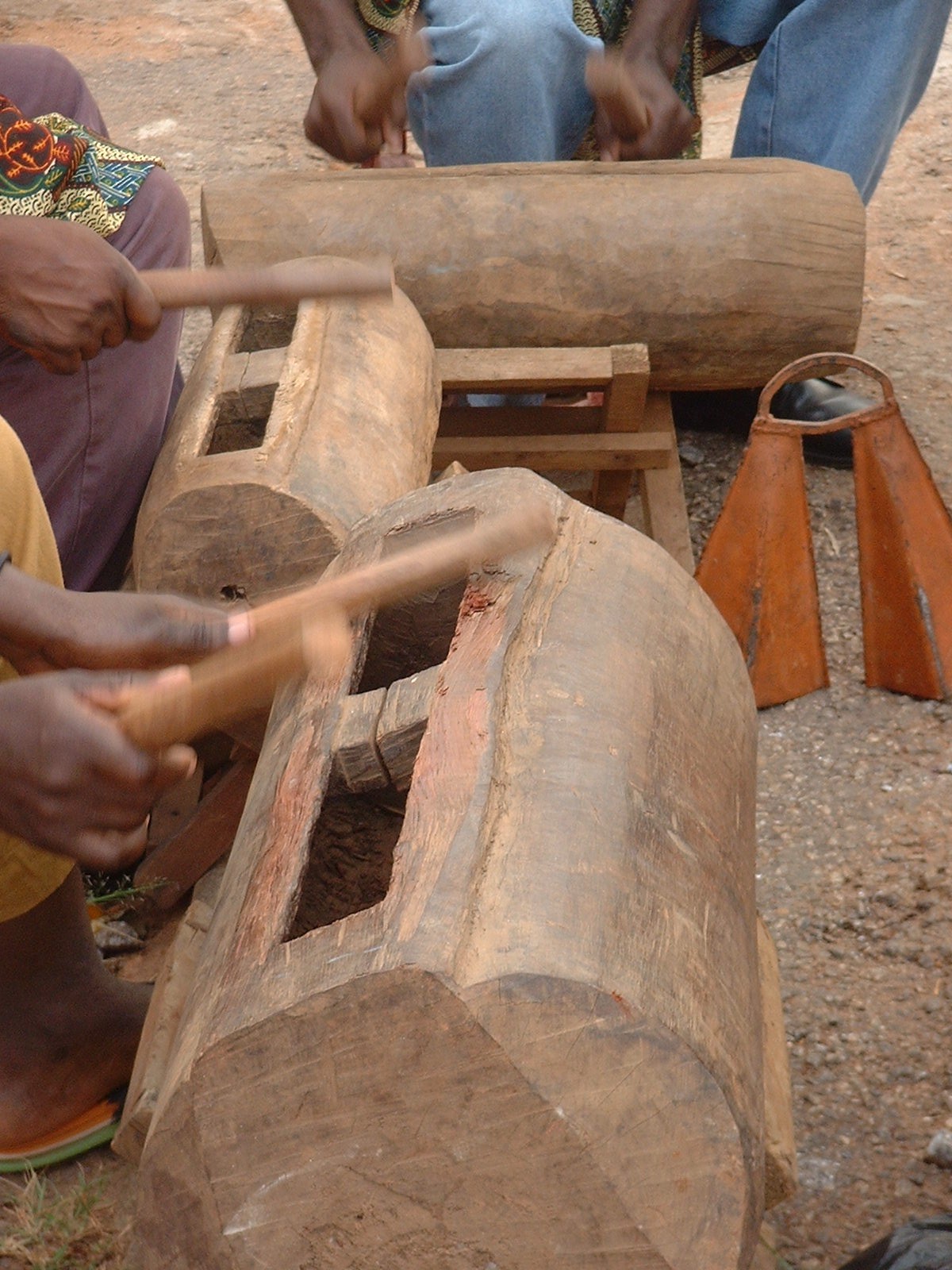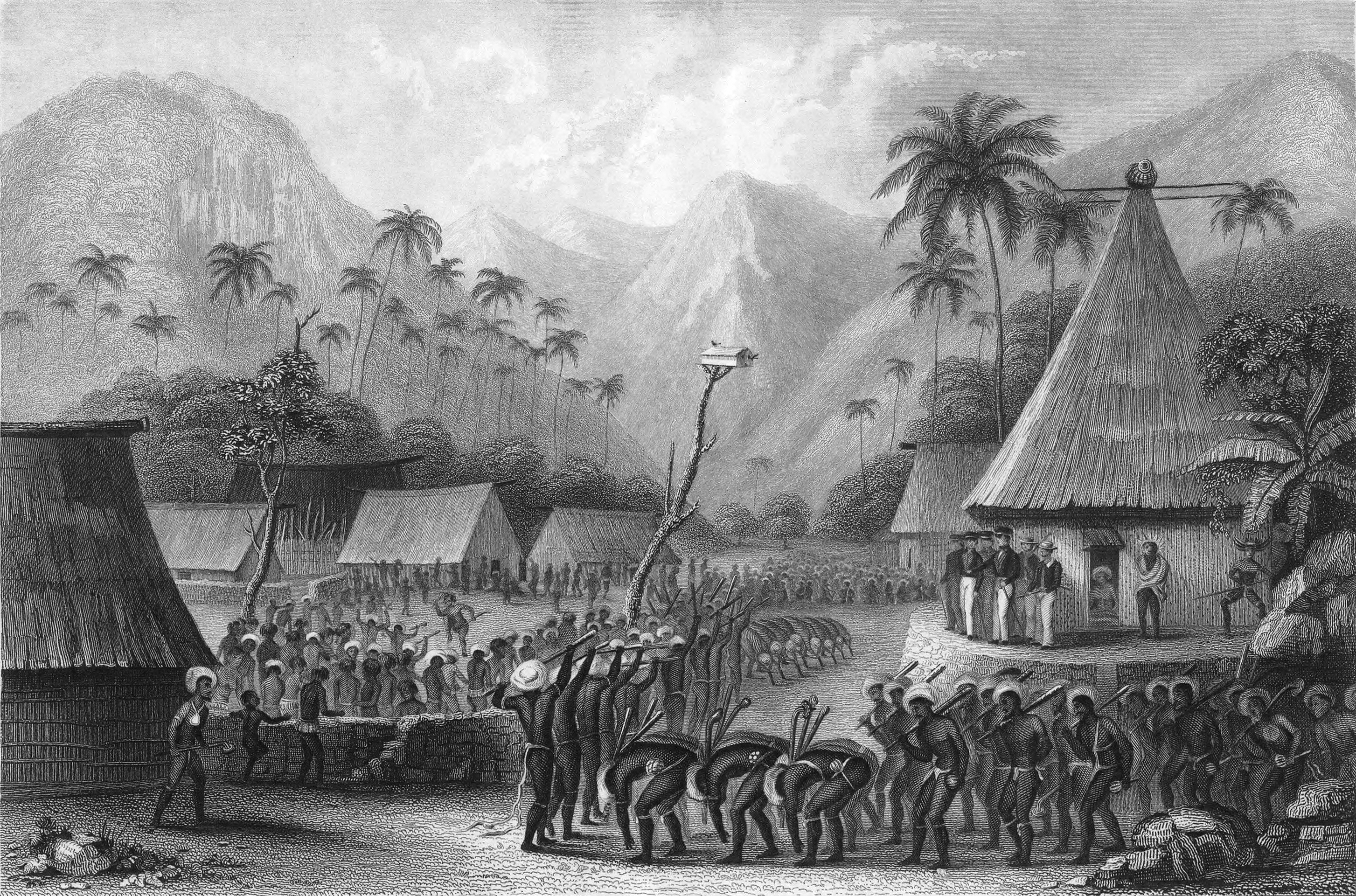|
Lali (drum)
A ''Lali'' is an idiophone, idiophonic Fijian drum of the wooden slit drum type similar to the Tahitian Pate (instrument), Pate of Tahiti and Samoa found throughout Polynesia. It was an important part of traditional culture of Fiji, Fijian culture, used as a talking drum, form of communication to announce births, deaths and wars. A smaller form of the Lali drum (''Lali ni meke'') is used in music. Lali drums are now used to call the people of an area together, such as church services; the Lali is also used to entertain guests at many hotel resorts. The Lali drum is made out of wood and played with hands but, is most commonly played with sticks (''i uaua'') which are made out of softer wood so as not to damage the Lali. Historically, a larger and smaller stick were used together when playing the Lali. Lali drums were traditionally made from resonant timbers such as ''Ta vola'' (''Terminalia catappa'') and ''Dilo'' (''Calophyllum inophyllum'') or in the case of sacred drums for spirit ... [...More Info...] [...Related Items...] OR: [Wikipedia] [Google] [Baidu] |
Idiophone
An idiophone is any musical instrument that creates sound primarily by the vibration of the instrument itself, without the use of air flow (as with aerophones), strings (chordophones), membranes (membranophones) or electricity ( electrophones). It is the first of the four main divisions in the original HornbostelŌĆōSachs system of musical instrument classification (see List of idiophones by HornbostelŌĆōSachs number). The early classification of Victor-Charles Mahillon called this group of instruments ''autophones''. The most common are struck idiophones, or concussion idiophones, which are made to vibrate by being struck, either directly with a stick or hand (like the wood block, singing bowl, steel tongue drum, triangle or marimba) or indirectly, with scraping or shaking motions (like maracas or flexatone). Various types of bells fall into both categories. A common plucked idiophone is the Jew's harp. According to Sachs, idiophones Etymology The word is from Ancient G ... [...More Info...] [...Related Items...] OR: [Wikipedia] [Google] [Baidu] |
Fiji
Fiji ( , ,; fj, Viti, ; Fiji Hindi: Óż½Óż╝Óż┐Óż£ÓźĆ, ''Fij─½''), officially the Republic of Fiji, is an island country in Melanesia, part of Oceania in the South Pacific Ocean. It lies about north-northeast of New Zealand. Fiji consists of an archipelago of more than 330 islandsŌĆöof which about 110 are permanently inhabitedŌĆöand more than 500 islets, amounting to a total land area of about . The most outlying island group is Ono-i-Lau. About 87% of the total population of live on the two major islands, Viti Levu and Vanua Levu. About three-quarters of Fijians live on Viti Levu's coasts: either in the capital city of Suva; or in smaller urban centres such as NadiŌĆöwhere tourism is the major local industry; or in Lautoka, where the Sugarcane, sugar-cane industry is dominant. The interior of Viti Levu is sparsely inhabited because of its terrain. The majority of Fiji's islands were formed by Volcano, volcanic activity starting around 150 million years ago. Some geo ... [...More Info...] [...Related Items...] OR: [Wikipedia] [Google] [Baidu] |
Slit Drum
A slit drum or slit gong is a hollow percussion instrument. In spite of the name, it is not a true drum but an idiophone, usually carved or constructed from bamboo or wood into a box with one or more slits in the top. Most slit drums have one slit, though two and three slits (cut into the shape of an "H") occur. If the resultant tongues are different width or thicknesses, the drum will produce two different pitches. It is used throughout Africa, Southeast Asia, and Oceania. In Africa such drums, strategically situated for optimal acoustic transmission (e.g., along a river or valley), have been used for long-distance communication. The ends of a slit drum are closed so that the shell becomes the resonating chamber for the sound vibrations created when the tongues are struck, usually with a mallet. The resonating chamber increases the volume of the sound produced by the tongue and presents the sound through an open port. If the resonating chamber is the correct size for the pitch b ... [...More Info...] [...Related Items...] OR: [Wikipedia] [Google] [Baidu] |
Tahiti
Tahiti (; Tahitian ; ; previously also known as Otaheite) is the largest island of the Windward group of the Society Islands in French Polynesia. It is located in the central part of the Pacific Ocean and the nearest major landmass is Australia. Divided into two parts, ''Tahiti Nui'' (bigger, northwestern part) and ''Tahiti Iti'' (smaller, southeastern part), the island was formed from volcanic activity; it is high and mountainous with surrounding coral reefs. Its population was 189,517 in 2017, making it by far the most populous island in French Polynesia and accounting for 68.7% of its total population. Tahiti is the economic, cultural and political centre of French Polynesia, an overseas collectivity and an overseas country of the French Republic. The capital of French Polynesia, Papeete, is located on the northwest coast of Tahiti. The only international airport in the region, Faa─ü International Airport, is on Tahiti near Papeete. Tahiti was originally settled by Pol ... [...More Info...] [...Related Items...] OR: [Wikipedia] [Google] [Baidu] |
Pate (instrument)
The P─üt─ō is a Samoan percussion instrument of Tahitian origin, named after the Samoan word for "beat" or "clap" "pulse". It is one of many Samoan log drum variants and is of the slit drum family, and therefore is also of the idiophone percussion family. It is made from a hollowed-out log, usually of Miro wood and produces a distinctive and loud sound. Different sizes of log drums offer different pitches and volumes, as well as striking the log drum in the middle or near the ends. Talipalau drums are a Samoan variant a little larger than a pate drum and somewhat smaller than the Lali log drum variant. The dimensions of some Talipalau are large as high and in length; these Talipalau are a distant cousin to the Fijian Lali drum which were larger in size. The smaller pate was said to be introduced to Samoa by inter-married Tahitians whom visited and settled in Samoa some 500 years ago. However, in recent times the pate is used together with the other lesser known traditional lo ... [...More Info...] [...Related Items...] OR: [Wikipedia] [Google] [Baidu] |
Samoa
Samoa, officially the Independent State of Samoa; sm, S─ümoa, and until 1997 known as Western Samoa, is a Polynesian island country consisting of two main islands (Savai'i and Upolu); two smaller, inhabited islands (Manono Island, Manono and Apolima); and several smaller, uninhabited islands, including the Aleipata Islands (Nu'utele, Nu'ulua, Fanuatapu and Namua). Samoa is located west of American Samoa, northeast of Tonga (closest foreign country), northeast of Fiji, east of Wallis and Futuna, southeast of Tuvalu, south of Tokelau, southwest of Hawaii, and northwest of Niue. The capital city is Apia. The Lapita culture, Lapita people discovered and settled the Samoan Islands around 3,500 years ago. They developed a Samoan language and Samoan culture, Samoan cultural identity. Samoa is a Unitary state, unitary Parliamentary system, parliamentary democracy with 11 Administrative divisions of Samoa, administrative divisions. It is a sovereign state and a member of the ... [...More Info...] [...Related Items...] OR: [Wikipedia] [Google] [Baidu] |
Polynesia
Polynesia () "many" and ╬Įß┐åŽā╬┐Žé () "island"), to, Polinisia; mi, Porinihia; haw, Polenekia; fj, Polinisia; sm, Polenisia; rar, Porinetia; ty, P┼Źr─½netia; tvl, Polenisia; tkl, Polenihia (, ) is a subregion of Oceania, made up of more than 1,000 islands scattered over the central and southern Pacific Ocean. The indigenous people who inhabit the islands of Polynesia are called Polynesians. They have many things in common, including language relatedness, cultural practices, and traditional beliefs. In centuries past, they had a strong shared tradition of sailing and using stars to navigate at night. The largest country in Polynesia is New Zealand. The term was first used in 1756 by the French writer Charles de Brosses, who originally applied it to all the islands of the Pacific. In 1831, Jules Dumont d'Urville proposed a narrower definition during a lecture at the Geographical Society of Paris. By tradition, the islands located in the southern Pacific have also ... [...More Info...] [...Related Items...] OR: [Wikipedia] [Google] [Baidu] |
Culture Of Fiji
The culture of Fiji is a tapestry of native Fijian, Indian, European, Chinese, and other nationalities. Culture polity traditions, language, food costume, belief system, architecture, arts, craft, music, dance, and sports will be discussed in this article to give you an indication of Fiji's indigenous community but also the various communities which make up Fiji as a modern culture and living. The indigenous culture is an active and living part of everyday life for the majority of the population. Fijian culture has evolved with the introduction of Indian, Chinese and European culture, and various cultures from the Pacific neighbors of Fiji; in particular the Tongan and Rotuman cultures. The culture of Fiji, including language, has created a unique communal and national identity. History Tradition and hierarchy Fijian indigenous society is very communal, with great importance attached to the family unit, the village, and the ''vanua'' (land).Spoken Fijian: Albert James Sch├╝t ... [...More Info...] [...Related Items...] OR: [Wikipedia] [Google] [Baidu] |
Terminalia Catappa
''Terminalia catappa'' is a large tropical tree in the leadwood tree family, Combretaceae, native to Asia, Australia, the Pacific, Madagascar and Seychelles. Common names in English include country almond, Indian almond, Malabar almond, sea almond, tropical almond, beach almond and false kamani. Description The tree grows to tall, with an upright, symmetrical crown and horizontal branches. The fruit are corky and light, and dispersed by water. As the tree gets older, its crown becomes more flattened to form a spreading, vase shape. Its branches are distinctively arranged in tiers. The leaves are large, long and broad, ovoid, glossy dark green, and leathery. They are dry-season deciduous; before falling, they turn pinkish-reddish or yellow-brown, due to pigments such as violaxanthin, lutein, and zeaxanthin. The trees are monoecious, with distinct male and female flowers on the same tree. Both are in diameter, white to greenish, inconspicuous with no petals; they are produced ... [...More Info...] [...Related Items...] OR: [Wikipedia] [Google] [Baidu] |
Calophyllum Inophyllum
''Calophyllum inophyllum'' is a large evergreen plant, commonly called tamanu, oil-nut, mastwood, beach calophyllum or beautyleaf. It is native to tropical Asia and Wallacea. Due to its importance as a source of timber for the traditional shipbuilding of large outrigger ships, it has been spread in prehistoric times by the migrations of the Austronesian peoples to the islands of Oceania and Madagascar, along with other members of the genus ''Calophyllum''. It has since been naturalized in regions in the East African coast. It is also a source of the culturally important tamanu oil. Names ''Calophyllum inophyllum'' is also known as Alexandrian laurel balltree, beach touriga, Borneo-mahogany, Indian doomba oiltree, Indian-laurel, laurelwood, red poon, satin touriga, and tacamahac-tree. In Island Southeast Asia and Oceania, they are also commonly known as bintangur, bitaog, tamanu, or kamani. In India it is known as Polanga (Ó¼¬ÓŁŗÓ¼▓Ó¼ŠÓ¼ÖÓŁŹÓ¼Ś) in Odia, Punnag (Óż¬ÓźüÓż©ÓźŹÓż ... [...More Info...] [...Related Items...] OR: [Wikipedia] [Google] [Baidu] |





